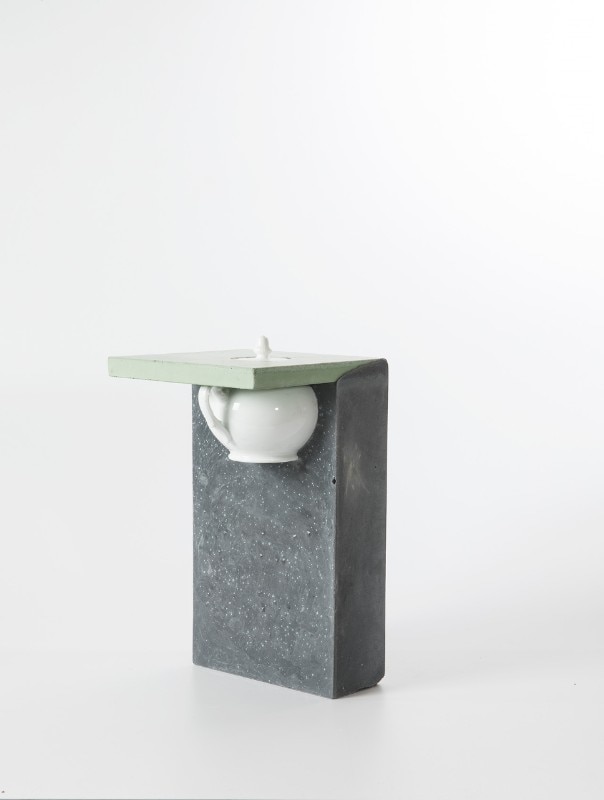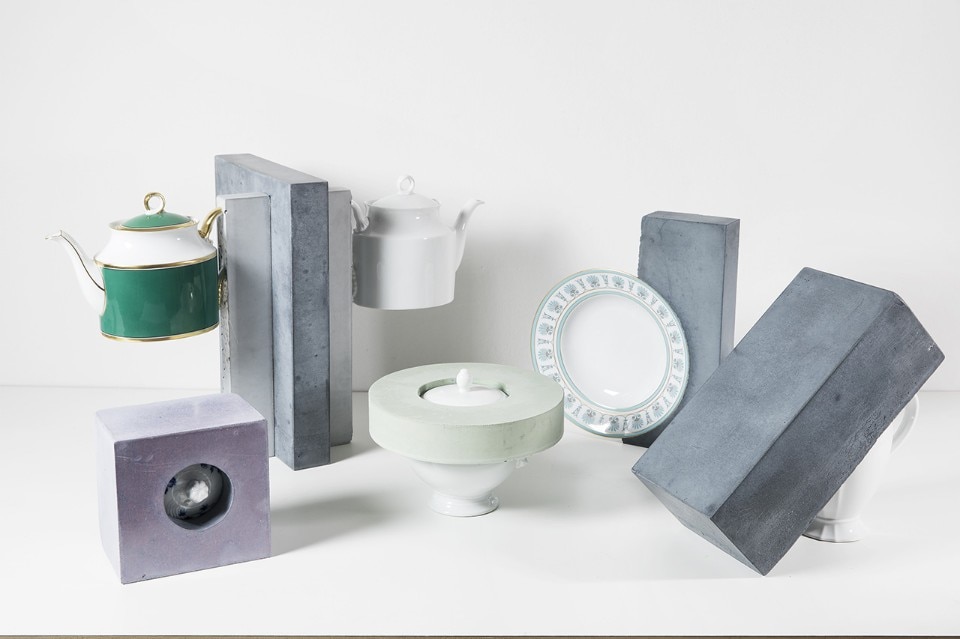Duccio Maria Gambi is quite unlike anyone else. With a clear and calm determination, for years he has pursued a style made up of simple lines and materials with an important specific weight, paralleling his research that extends from the Radicals in the seventies to the Atelier Van Lieshout at the present time. A collection of his pieces created by embedding objects by Richard Ginori in masses of concrete will be on display at the Giardino Corsini in Florence (from 16 to 20 May), with the proceeds from the sales going to support the reopening of the Richard Ginori Porcelain Museum. And in Milan, the Galleria Giovanni Bonelli and Nero Design Gallery are presenting Gambi’s double solo show together with the anarchitect Gianni Pettena (until 19 May).

 View gallery
View gallery










You’ve worked with resin, cement, stone and metal. Hard, uncompromising materials. Now in recent years comes foam, with a first upholstered piece at the Nero Design Gallery (though true to your geometric rigour). Do you see a softening in your handling, or is it a simple extension of your research, without substantial changes?
The kind of materials I choose certainly lead me to hard results, but in my work there is also a striving towards the soft, however rare and occasional. An example is the L'amour project, in foam and concrete, or Zuperfici, where I covered stone with carpet. The plastic laminate of Zuperfici and the colour of Petrografico could also probably be described as soft. There are moments when the softness is only conjectural and then abandoned or deliberately annihilated. I’m thinking of the bowls or the latest stools, Morbido Brutale, which we presented in Milan. I alternate geometric stringency, a part of my vocabulary, with informal moments when I experiment with less controlled methods of working, as in the latest works, where I used polystyrene moulds and again foam. But the upholstery is rigid, the absolute minimum of softness for an armchair. Maybe the next pieces will be softer.
You were in Paris for a long time, but you've chosen to live in Tuscany. And one of your most important exhibitions is now being held in Milan. Do you think there are some favoured cities to work and develop in as a designer?
Given the ease of travel in today’s world and how the possibilities to communicate broaden the range of action and the amount of input, it’s undeniable that big cities like Milan and Paris are at the centre of networks of curators, journalists and clients that it is fundamental to work with and they offer opportunities for self-expression. Their energy and creative richness is undeniable, and it’s essential to grow by adding pieces and exploring the contemporary landscape in direct ways. In this respect, periods spent in Milan, Rotterdam and Paris have been fundamental for me, in both human and professional terms. In general I think that in London, the Netherlands and France there are more structures supporting design, more investment by institutions and schools. And I think there is more integration and fusion between the figure of the craft worker and the designer, both at school and in the profession, and that’s crucial. As for me, after completing a fundamental development, I decided to return. I’m convinced that Florence is a good compromise between both working and intellectual opportunities, as well as for the quality of life.
On show in Milan is a selection of pieces that retrace the last years of your career and your collaboration with Nero Design Gallery, starting from 2015. What are you aiming at with the exhibition?
We wanted to concentrate the various strands of research that we’ve been following in recent years into a single space, displaying pieces already produced, presenting new examples of past series, and completing the circuit with new projects presented for the first time. It was an opportunity to get an all-round view of the excellent work we’ve done so far and that only existed sporadically at the various fairs I did together with the gallery.

 View gallery
View gallery














































An important partnership for you. What part did your association with the Nero Design Gallery play in your research?
We’re continually swapping ideas. Over the years, it’s been an important exchange, starting from the emergence of a clear line of research among the many that started in my sketch books and workshop. I feel we were immediately able to understand and define our shared space, to dovetail our ideas by attending to the many aspects that contributed to the final result. The Nero Design Gallery’s sensibility to aspects of colouring, surface and detailing is fundamental for me, while my aptitude is rather for composition and volume.
Your pieces are being presented at the Galleria Giovanni Bonelli along with a selection of works by the artist and anarchitect Gianni Pettena, your professor at university in Florence. You’ve often mentioned him, recalling the influence he had on your formation. How do you see this double exhibition and the possible ways your pieces affected each other?
I mention Pettena in my biography because I believe that in the story of who I am now, which is the sum of myriad factors, the spark he lit for me in my twenties was fundamental, and I’m grateful to him. In the same way I mention other people and experiences that shaped me. To me it’s an honour to exhibit with a master that I respect deeply. Once the space was set up it was a pleasure to see how works very different from each other came together visually and conceptually. I think we managed to create a lively and sensible discourse that was much more than just a coherent and balanced approach.



